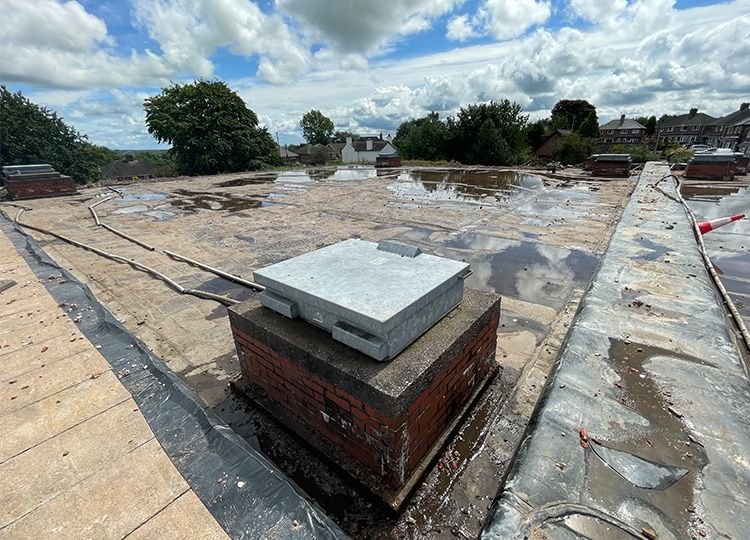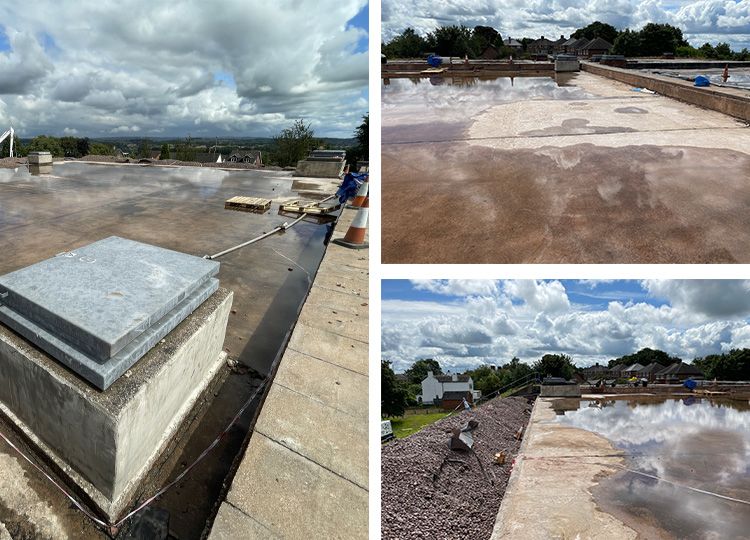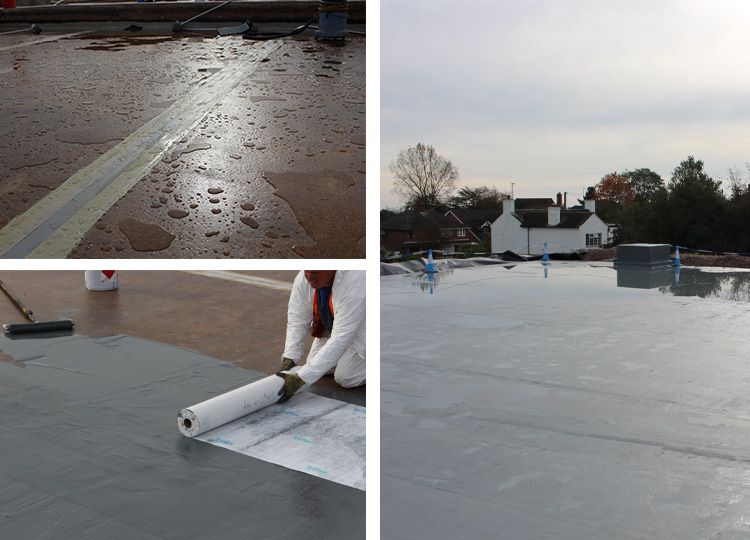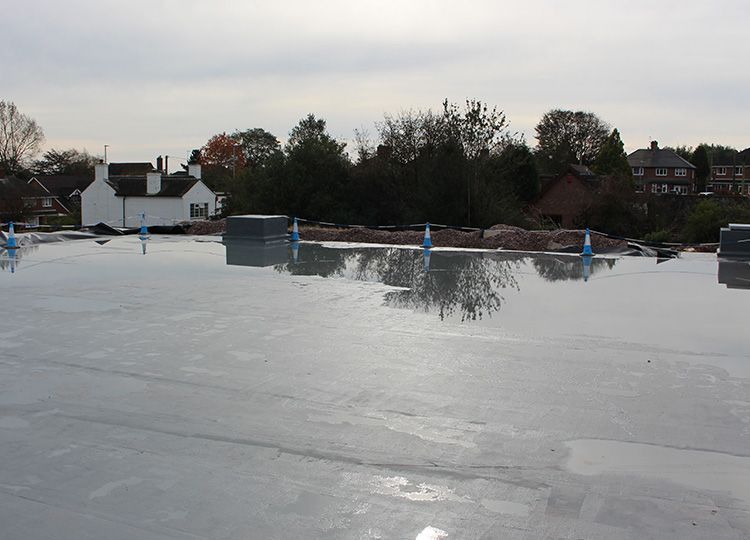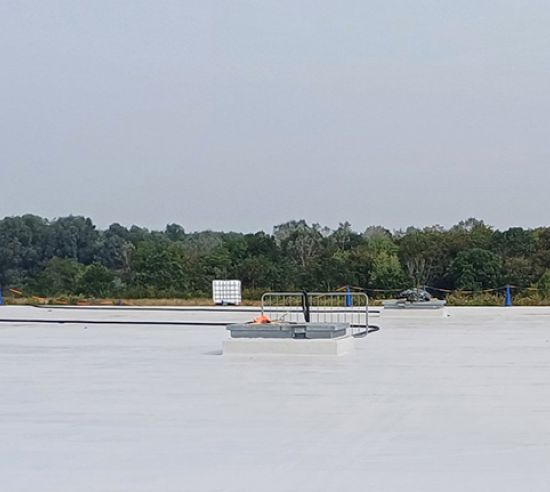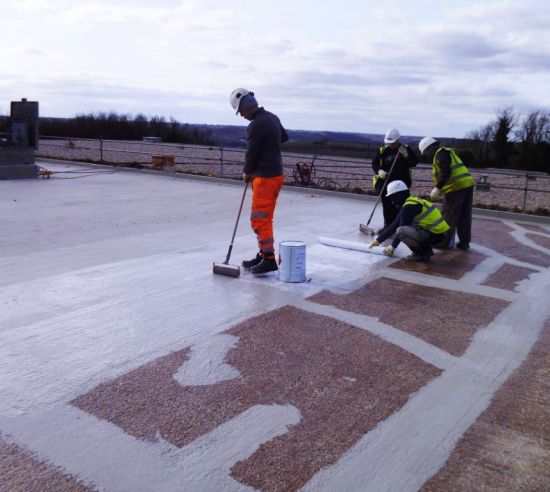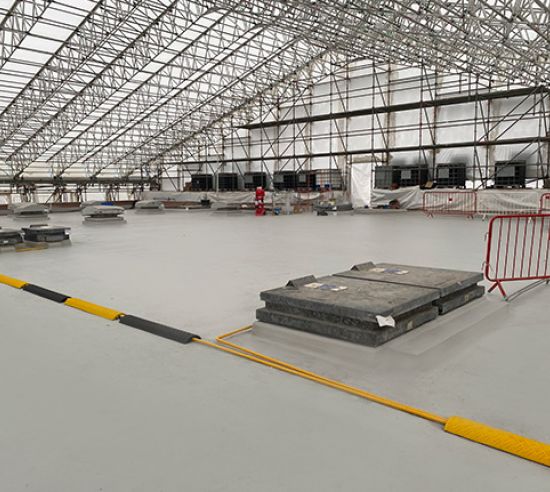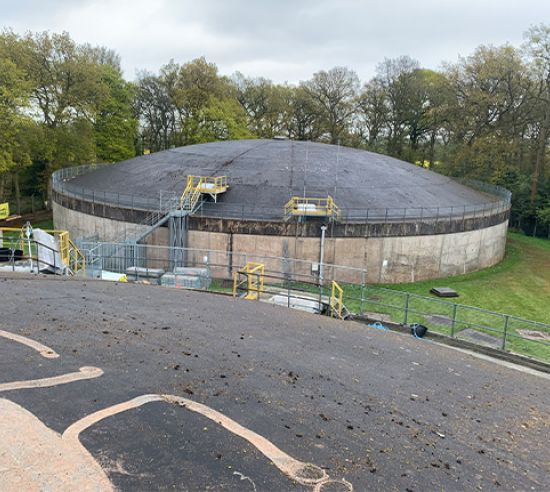Introduction
A small concrete roof covered reservoir in the UK was showing signs of water ingress. The existing tanking membrane had reached the end of its life and a new solution was required. Whilst a conventional approach would be to create falls with screed, the additional weight meant this was not an option for this water storage facility.
A new innovative solution utilising hydrolysis resistant waterproofing provided outstanding waterproofing with dynamic crack bridging providing a future proof solution.
The challenge
The existing four sectioned concrete roof provides cover for water storage tanks at a reservoir. One of the tanks was showing evidence of water ingress, prompting the need for a new waterproofing solution. The existing build-up consisted of a buried sheet membrane with geotextile separation layer and inverted roof overburden of ballast.
To fully inspect the concrete substate, the ballast overburden and existing failing tanking membrane was removed.
Ponding water was evident due to the nature of this particular flat roof structure. Whilst this would be negated through creating falls with screed, due to this increasing the weight of the roof structure it was not a viable option for this roof. A gutter detail at the perimeter of the reservoir assists with drainage, and also needed consideration in the refurbishment.
The solution
The Triflex Technical team are experts in waterproofing concrete roofs and conducted a thorough inspection with testing to consider the best solution for the water storage reservoir. The resulting bespoke project specification proposal recommended Triflex ProTect system to provide a liquid applied waterproofing membrane that is suitable for zero falls. The technologically advanced polymethyl methacrylate (PMMA) resin system is inherently hydrolysis resistant, meaning that it will not break down in water.
Certified to BS 1504- 4 the reinforced Triflex ProTect system offers dynamic crack bridging capability for concrete, delivering long term confidence for the waterproofing membrane on this substrate. To assess any pretreatment and primer requirement the Triflex team conducted a number of in situ tests, providing evidence of cohesive strength tests for the Triflex concrete primer.
For details, upstands and downstands the reinforced Triflex ProDetail system is self-terminating providing a simple and efficient solution. In this instance the system interface with the LLDP gutter detail was also tested for compatibility, with adhesion tests proving that the system could be simply lapped onto the formed gutter detail. The liquid applied system easily accommodates complex forms, providing a seamless solution for the access hatches on the reservoir roof. With the systems FLL certified for root and rhizome resistance, then encroaching vegetation or contact with the soil bank poses no threats the waterproofing capability.
Triflex PMMA resin-based systems cure rapidly, even in winter temperatures. Solvent and isocyanate free the surface is rainproof in 30 minutes, and trafficable in as little as 60 minutes, enabling a more predictable and efficient programme of works.
The tough and durable systems are also UV stable and can be left exposed to the elements. With an anti-skid walkway option available and up to 50 different finish colours, whatever design or safety feature is required can be accommodated. In this instance the existing ballast was reinstated over the liquid applied waterproofing membrane, negating any removal or disposal costs and associated waste.
For the walkways that cross the roofs, a heavy-duty finish that retains its high PV of 75 over time was installed, delivering reassurance to maintenance personnel.
The persistent ponding water on this concrete roof is no longer of concern thanks to the use of advanced hydrolysis resistant waterproofing membranes from Triflex. Elastomeric in nature with certified crack bridging capability, the Triflex systems deliver a watertight concrete reservoir roof able to cope with movement due to temperature variation both now and in the long term.

